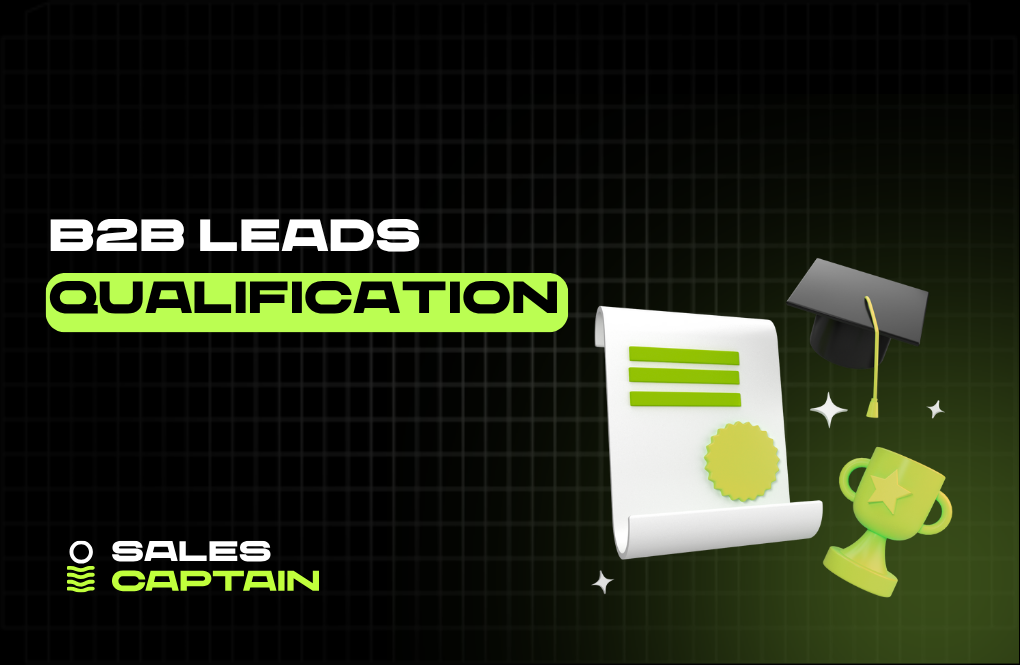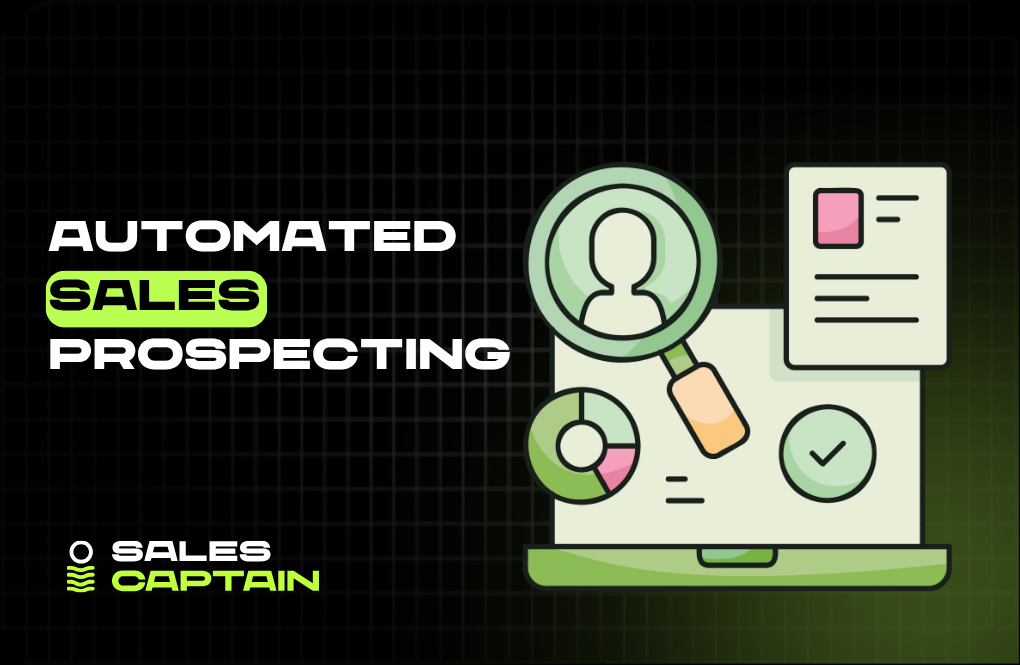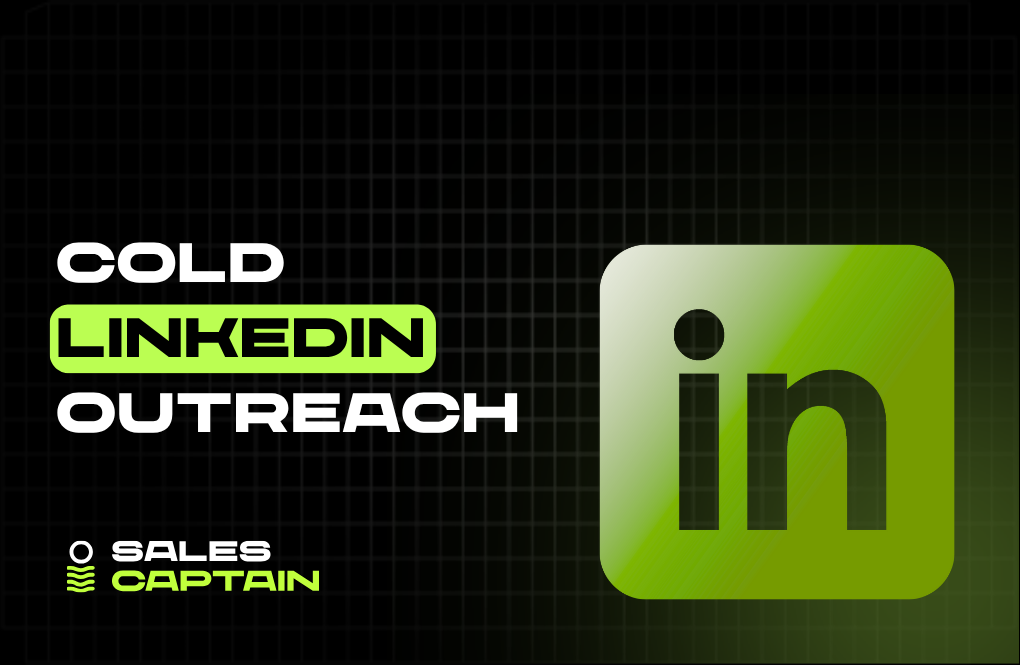

13 Best AI SDR Tools in 2025 (Ranked, Reviewed, and Battle-Tested)

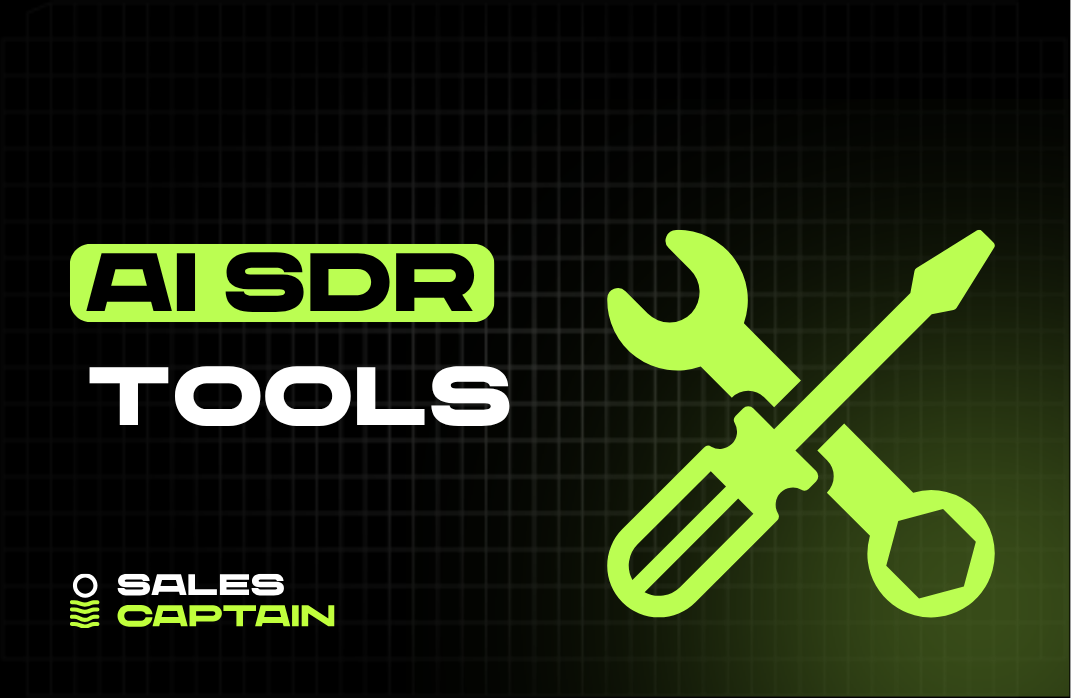
AI SDR tools aren’t just “nice to have” anymore. They’re flipping outbound on its head.
Instead of hiring a crew of reps to chase leads, qualify buyers, and book meetings, growth teams are plugging in AI that does all of that, faster, cheaper, and without missing a beat.
But here’s the thing. Most AI tools sound great on paper. “Personalized outreach at scale.” “24/7 follow-up.” “Instant lead qualification.” Cool. Now show me one that actually works in the wild.
This post does exactly that.
We dug deep into the 13 best AI SDR tools on the market right now. What they’re great at. Where they fall short. And which ones are actually worth your time based on your stage, stack, and strategy
Let’s get into it.
What Is an AI SDR?
Definition and Role
An AI SDR (Artificial Intelligence Sales Development Representative) is exactly what it sounds like: software built to handle what traditional SDRs used to do by hand. Prospecting. Outreach. Lead qualification. Meeting scheduling.
Except this version never gets tired or distracted. It doesn't waste time toggling between tabs or forgetting to follow up. It just runs. Around the clock.
At its core, an AI SDR automates the early part of your sales process. It finds leads, checks if they fit your ideal customer profile, sends personalized outreach, and pushes qualified leads into your pipeline. That’s a huge shift from the old spray-and-pray model, where SDRs spent most of their time trying to figure out if someone was even worth contacting.
The AI SDR flips that. It starts with the signal. Then it moves.
How They Work
AI SDRs run on a mix of data extraction, automation, and machine learning. They scrape public data sources like LinkedIn, Crunchbase, job boards, or even company websites. Then they use that data to build dynamic lists of leads that match your ICP.
From there, things get tactical. They personalize messages using NLP (natural language processing), stagger touchpoints across email or LinkedIn, and automatically handle follow-ups based on how the lead engages.
You’ll often see them do things like:
- Personalize an intro email using a company’s latest funding news
- Trigger a LinkedIn message when someone clicks a link in an earlier email.
- Qualify a website visitor using chat, then drop a calendar link right into the thread.
All of this happens in real time. No hand-holding required.
AI vs. Human SDR Comparison
Let’s be honest. AI SDRs blow humans out of the water on scale. They’re faster, more consistent, and a whole lot cheaper. They don’t miss steps or forget to follow up. And they can handle hundreds of leads at once without breaking a sweat.
But they’re not perfect.
They still struggle with context that requires deep emotional nuance. They can’t build trust over a long sales cycle or read between the lines of a conversation. That’s where humans shine.
The smart move? Use AI for volume and qualification. Use humans to close. AI SDRs get you in the room. Your team still has to win the deal.
Key Features & Capabilities
Automated Prospecting & Lead Enrichment
Let’s kill the myth: no one’s manually building lead lists anymore. That job’s gone. AI SDR tools now do it faster and better than any intern ever could.
They scrape LinkedIn, job boards, company pages, wherever your buyers leave a trail. Then they piece it together. Name, title, email, tech stack, and even how fast the team’s hiring.
You don’t need to touch a CSV. You just open the dashboard and see leads that are actually worth talking to.
Personalized Messaging at Scale
The old way? Write a decent cold email, plug in {first_name}, and hope it lands. The new way? AI writes 10 better versions before you’ve had your coffee.
These tools don’t just mail-merge. They read the room. “Congrats on the funding” if that just dropped. “Saw you're hiring AEs” if that’s trending. They pull real context from real signals, then write like a person, not a robot choking on variables.
You can even run different tones by persona. VCs get sharp and bold. Ops folks get structured and direct. Feels human, scales like software.
Follow-up Automation & Objection Handling
Most reps drop the ball here. One no-show, one “circle back next quarter,” and the thread dies. AI doesn’t let that happen.
It keeps the loop going. Bumps the thread. Handles objections. Swaps tone when needed. If someone ghosts after clicking a link, the system nudges them, with a new hook that actually fits the moment.
And if someone responds with friction? The tool can triage it. “Not interested”? Cool. Back off. “Busy right now”? Re-engage in two weeks. You set the logic. It runs the playbook.
Real-Time Qualification & Meeting Scheduling
You want fast meetings, not form fills.
AI SDRs qualify leads in the moment, in chat, in DMs, even inside your inbox. If someone fits, the tool asks the right questions, scores the lead, and drops your calendar link before they bounce.
The best ones route leads to the right rep, sync with real availability, and book without back-and-forth. No more scheduling friction. Just warm meetings, ready to go.
Performance Analytics & Optimization
If your cold outreach isn’t learning, it’s dying.
These platforms show what’s working and what’s not, instantly. You can see reply rates by persona, test subject lines, or track how long it takes reps to follow up on hot leads.
Some tools even show how messaging performs by industry or title. So you’re not just tracking vanity metrics. You’re tightening the system, one feedback loop at a time.
Top AI SDR Tools in 2025
AiSDR
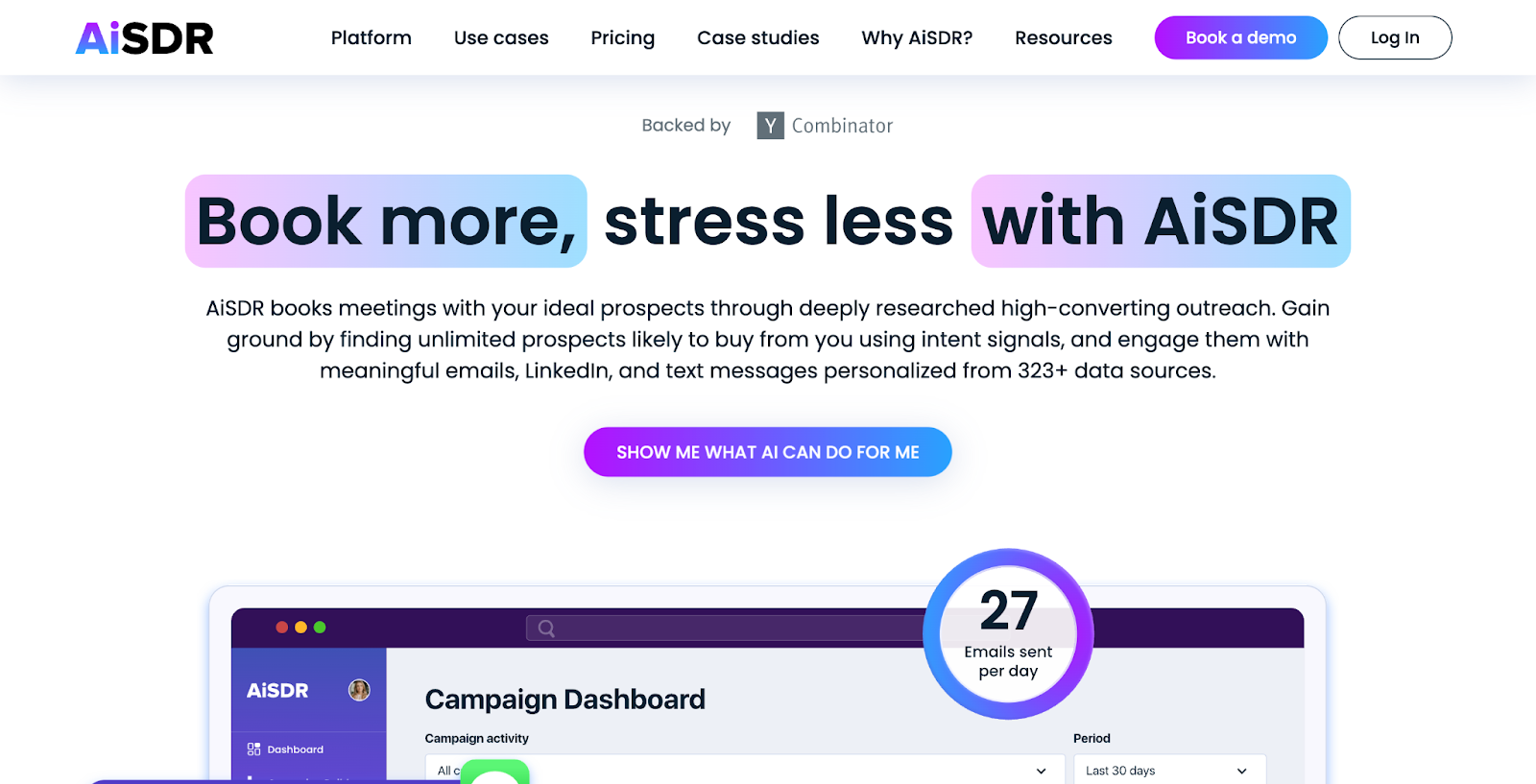
What it is: A full-stack AI SDR platform that handles multi-channel outreach, custom scripts, and automated follow-ups.
Why it’s great:
- Omnichannel out of the box: email, LinkedIn, and SMS
- Dynamic call scripts that adapt to each prospect
- Lead scoring and enrichment built in
Where it falls short:
- Takes a bit to set up correctly
- Can feel bulky if you just want a simple cold email engine
Best for: Mid to large teams running high-volume outbound who want one tool to rule them all.
Agent Frank
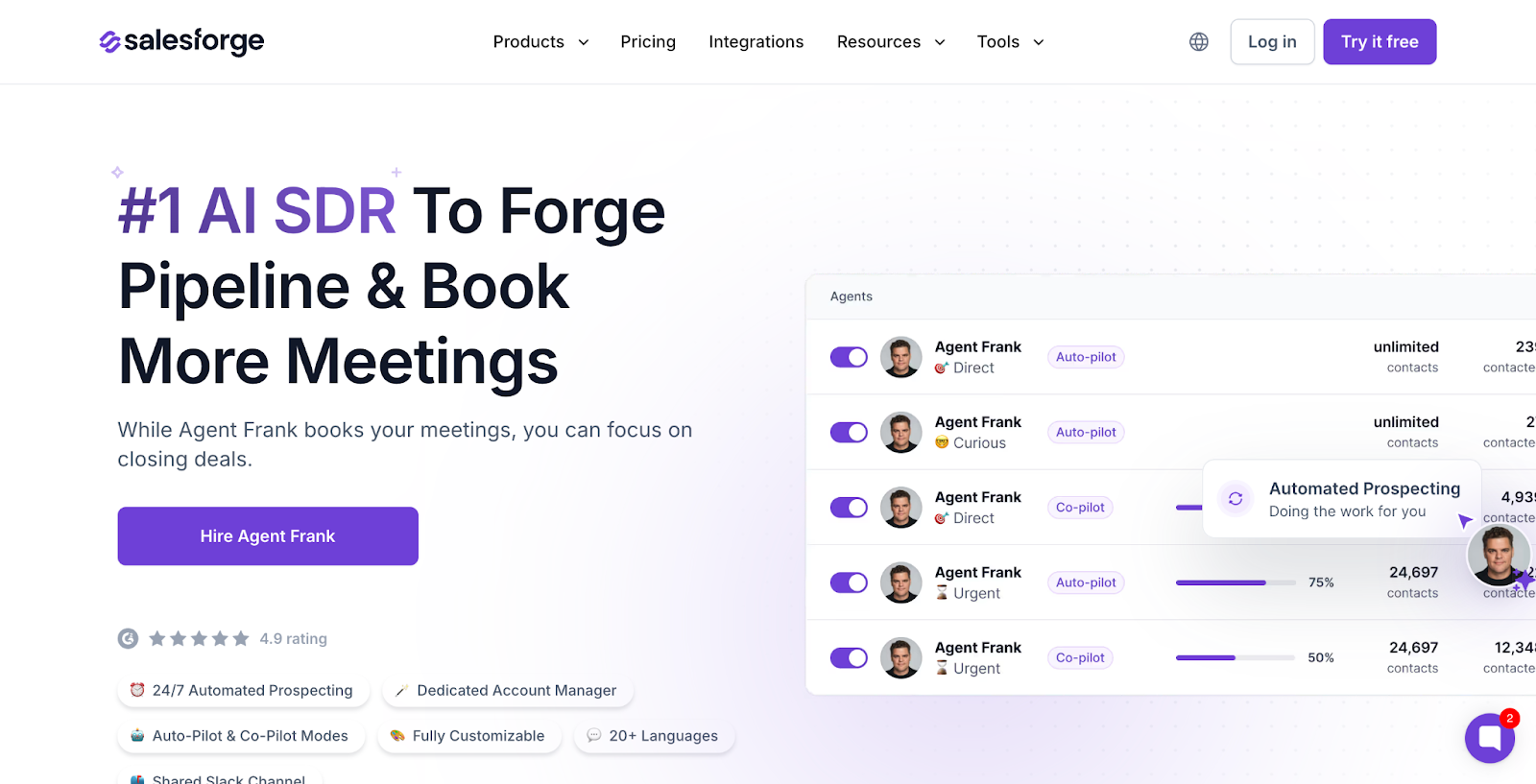
What it is: A self-learning AI SDR that molds to your sales style and messaging over time.
Why it’s great:
- Adapts to your process, not the other way around
- Gets smarter the more you use it
- Handles follow-ups and tone shifts automatically
Where it falls short:
- Doesn’t come with pre-built playbooks (which is kind of the point)
- Not ideal for teams that want to plug-and-play
Best for: Startups or teams with a unique sales process who want an AI tool that truly “learns.”
MeetChase AI
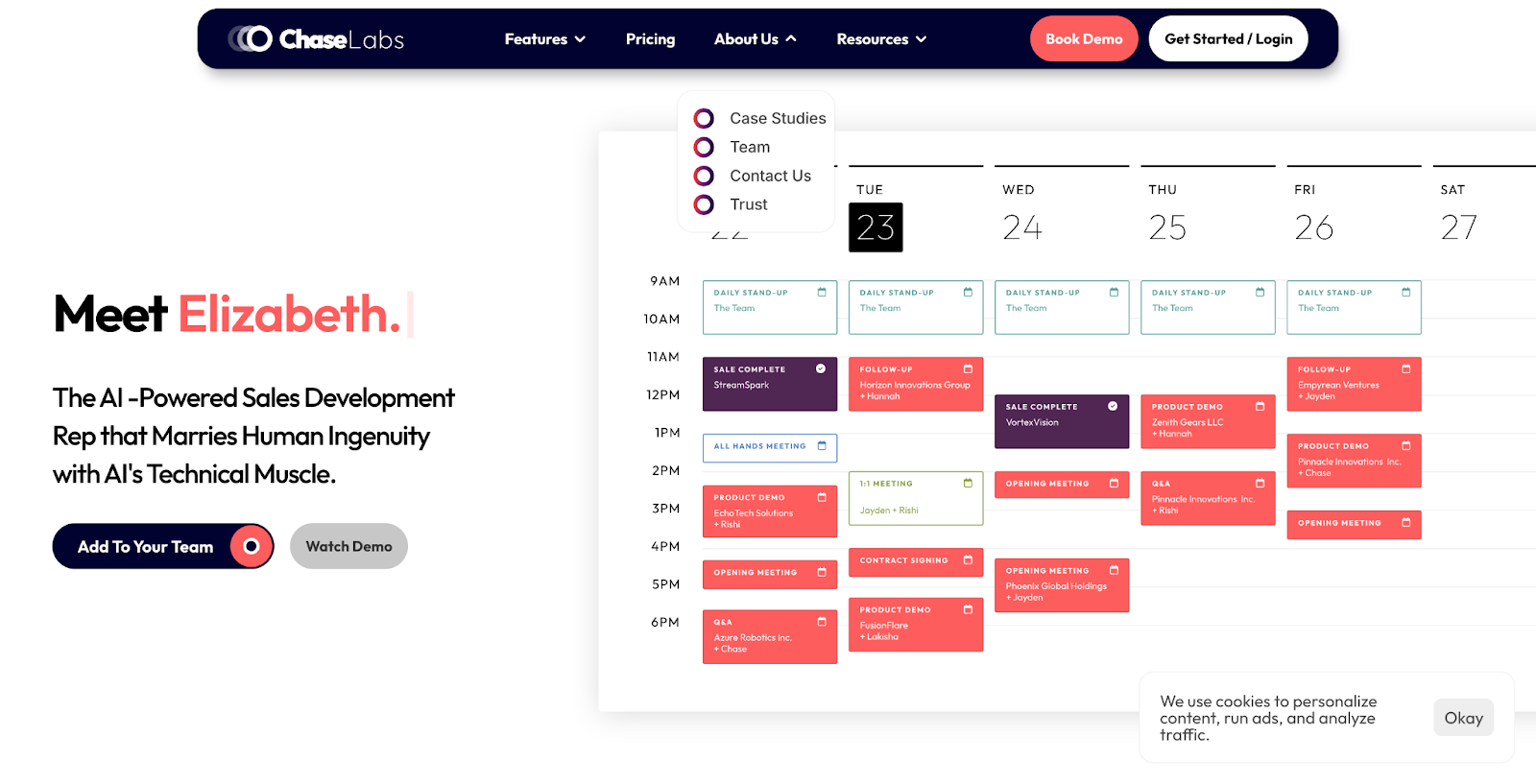
What it is: A meeting-first SDR assistant that prioritizes qualification and calendar booking.
Why it’s great:
- Focuses on booking quality meetings, not just sending messages
- Great at handling calendar sync, timezone logic, and rep routing
- Built-in lead scoring during scheduling
Where it falls short:
- Limited outreach features compared to full-stack tools
- Not ideal for top-of-funnel prospecting
Best for: Teams that already get inbound interest or warm leads and need a frictionless way to convert them.
Artisan AI (Ava)
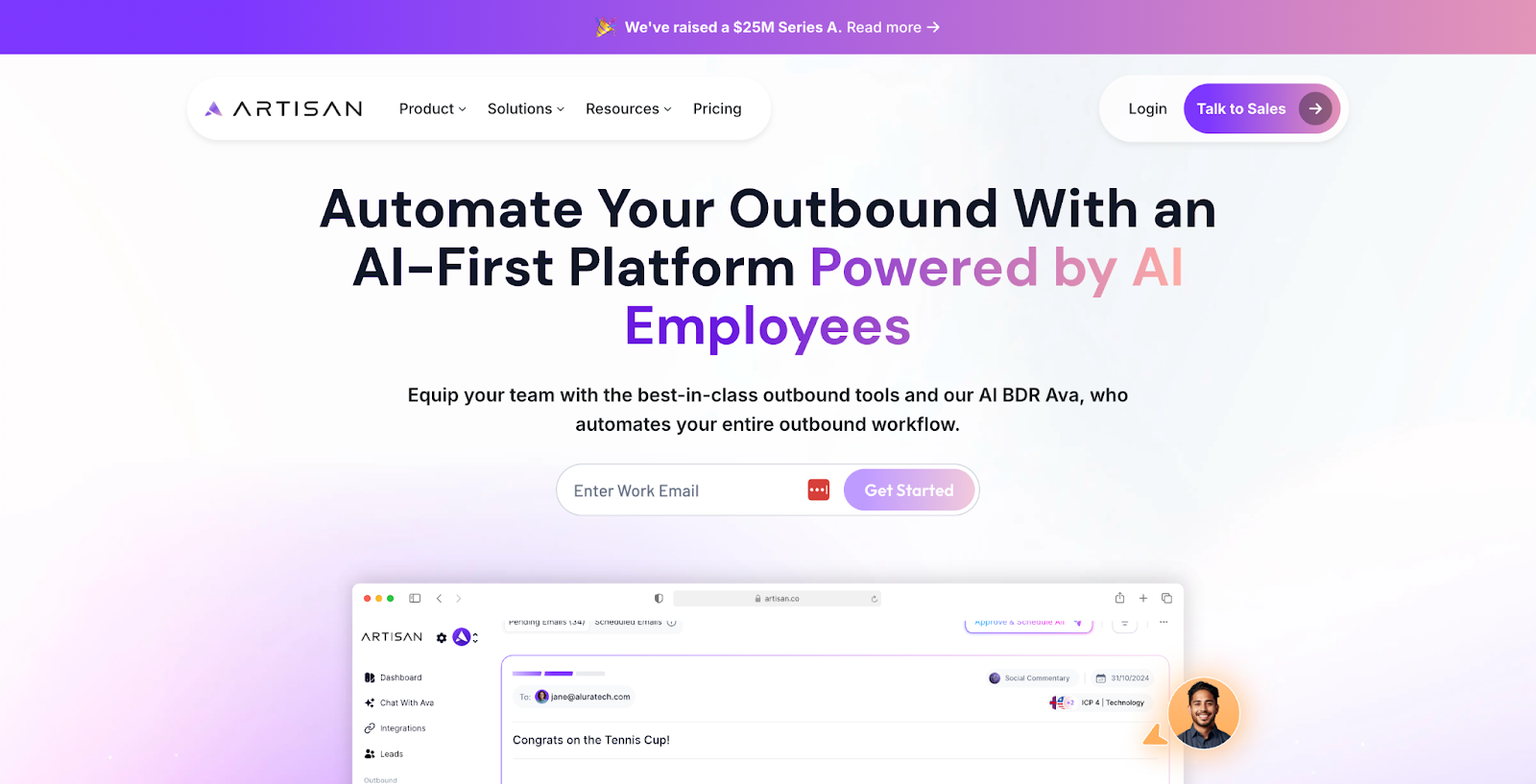
What it is: A high-volume personalization engine with a massive contact database.
Why it’s great:
- Deep multi-channel personalization at scale
- Huge contact pool, good for net-new lead sourcing
- Sequence builder is flexible and powerful
Where it falls short:
- Less intuitive than newer tools
- Can overwhelm small teams with options
Best for: Outbound-heavy teams that need reach and relevance, especially across multiple channels.
11x.ai (Alice)
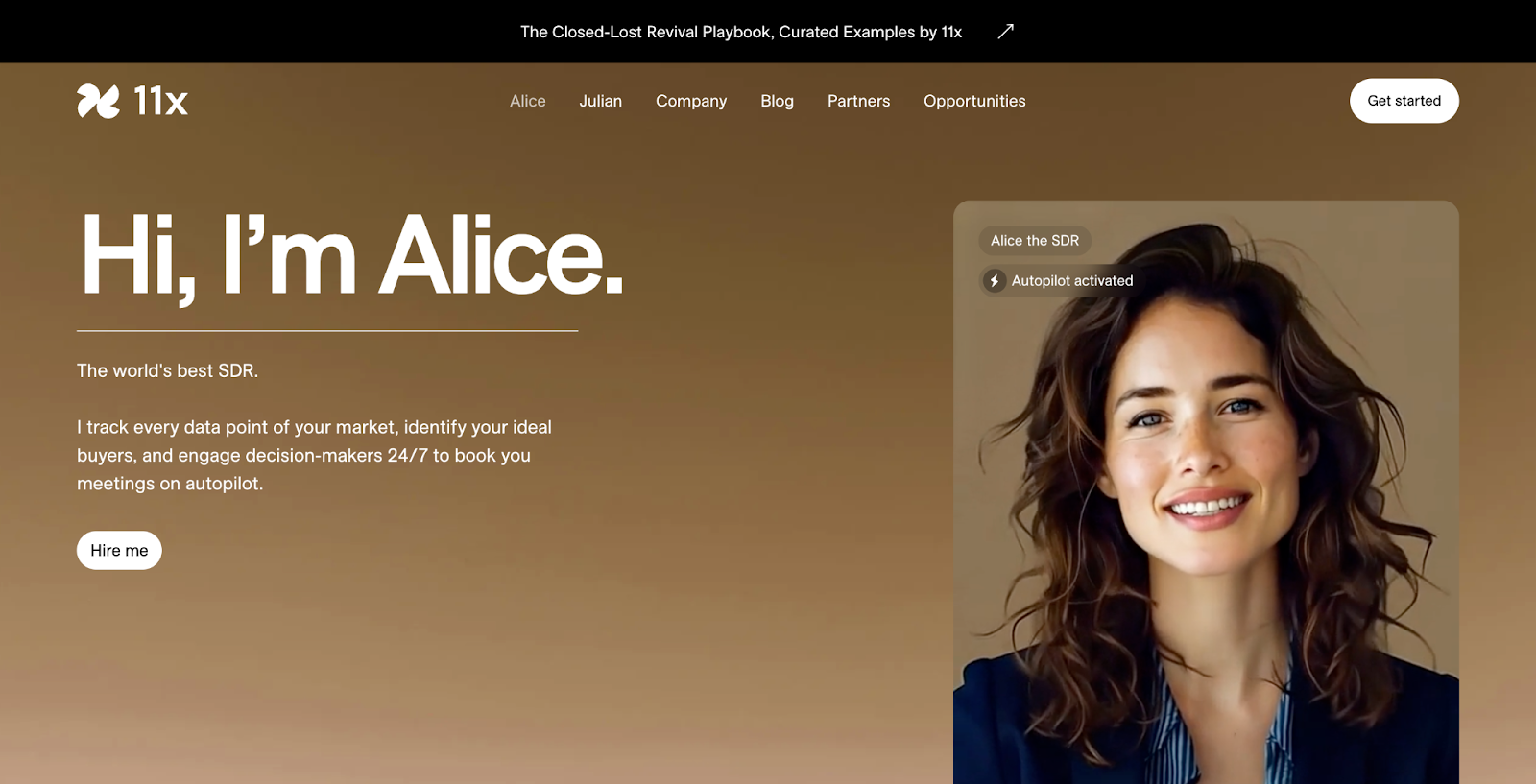
What it is: A power-user tool built for enterprise-level SDR automation.
Why it’s great:
- Tracks buyer intent in real time
- Personalizes messaging based on role, tech stack, and company data
- Handles objection replies and follow-ups automatically
Where it falls short:
- Expensive, and it expects clean data going in
- Overkill for teams without solid outbound foundations
Best for: Enterprise teams or funded startups running aggressive outbound with solid infrastructure.
Piper by Qualified
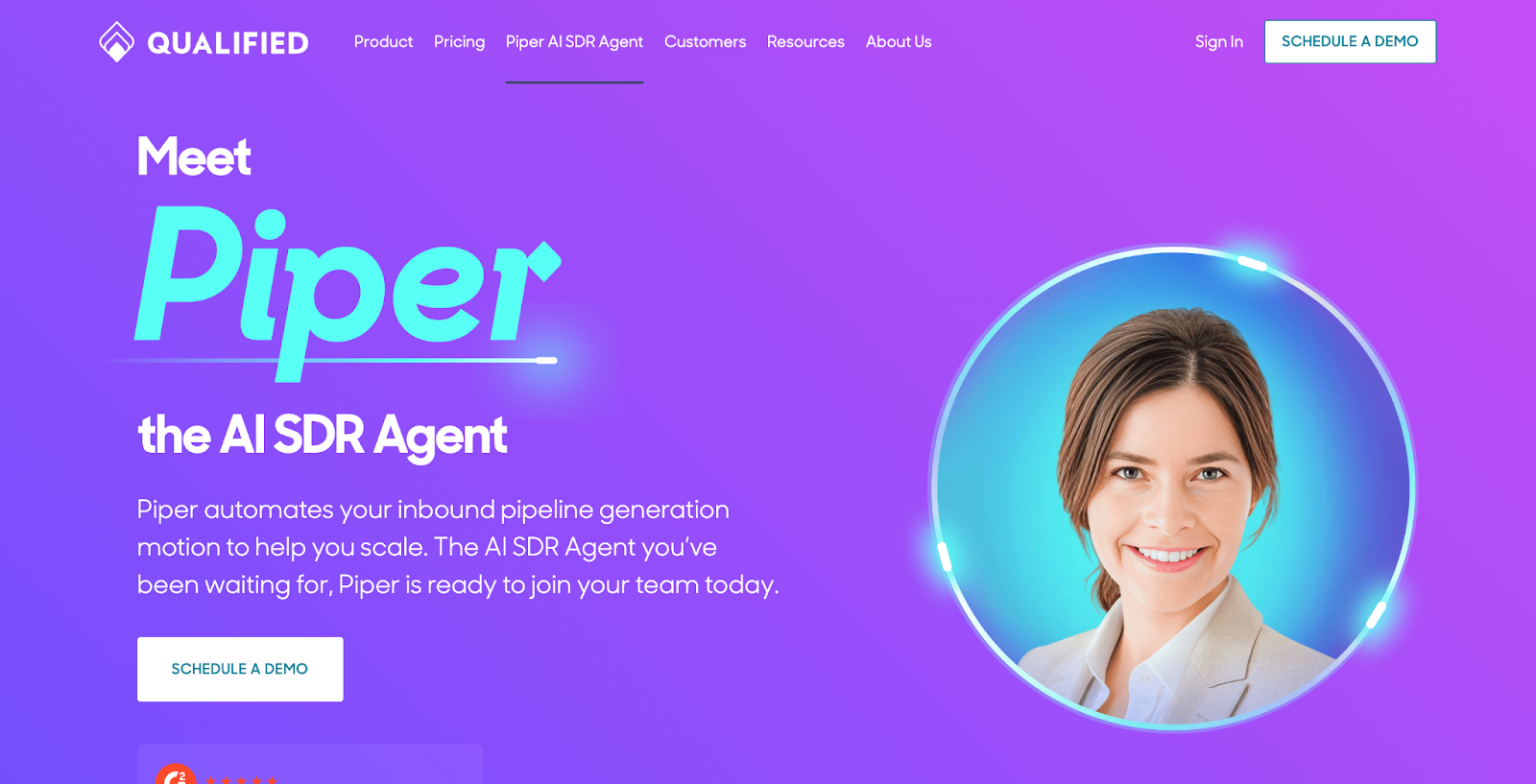
What it is: A website-based SDR that engages and qualifies leads 24/7.
Why it’s great:
- Lives on your site and feels like a real rep
- Qualifies visitors based on behavior and profile
- Books meetings instantly, with zero human lag
Where it falls short:
- Only works if you already have site traffic
- Not built for cold outreach
Best for: Teams with strong inbound traffic who want to stop leaking qualified buyers.
Jason AI by Reply
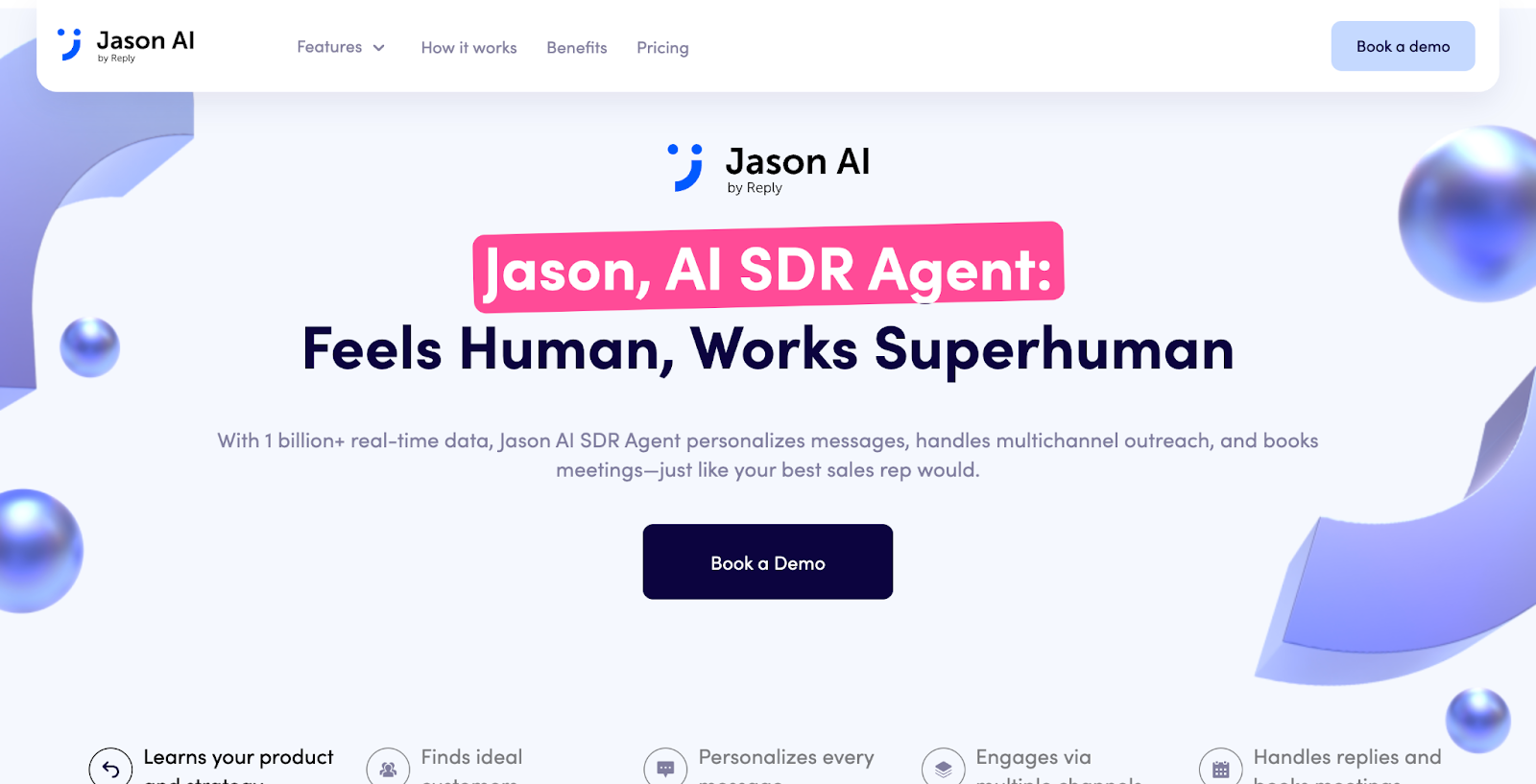
What it is: Reply.io’s built-in AI SDR layer that manages outreach across email and LinkedIn.
Why it’s great:
- Ties together prospecting, messaging, and analytics
- Easy to customize and iterate
- Good balance between automation and control
Where it falls short:
- Less advanced personalization than newer players
- Can feel a bit templated without heavy tuning
Best for: Teams already using Reply who want to add automation without switching stacks.
Salesforce Einstein / Agentforce
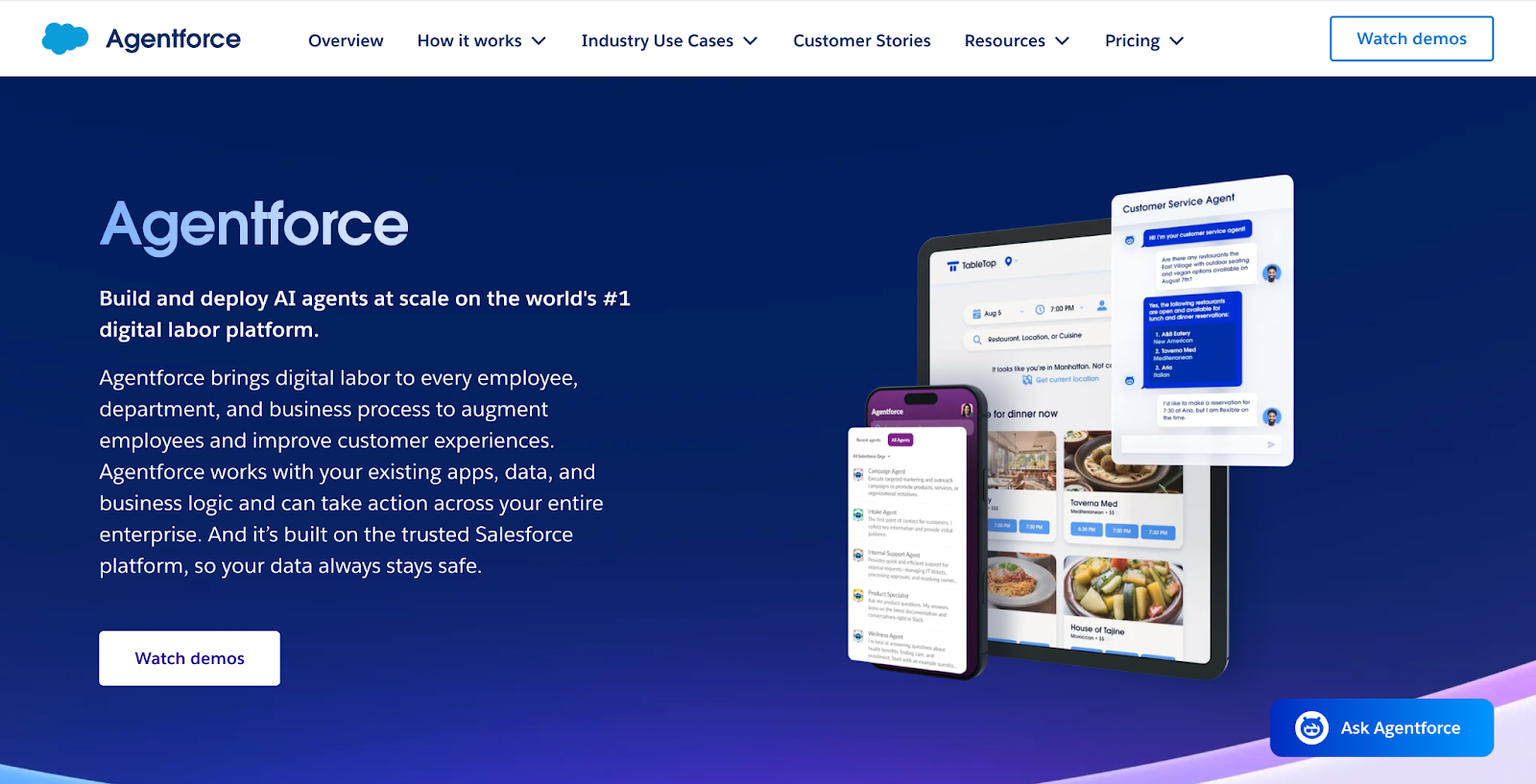
What it is: Salesforce’s AI sales engine for routing, outreach, and pipeline intelligence.
Why it’s great:
- Fully native to Salesforce CRM
- Strong lead routing logic
- Learns from your deal data and adapts over time
Where it falls short:
- Requires a mature Salesforce setup
- Not for teams that want a standalone SDR tool
Best for: Large orgs already deep in Salesforce who want to layer in AI without adding a new platform.
Other Notable Tools
Quick hits worth knowing:
- Saleshandy: Lightweight, great for email-only cold outreach
- Apollo.io: Excellent data enrichment with built-in sequencing
- Waalaxy: One of the best for LinkedIn automation
- Dialpad: Adds voice and call tracking into your SDR mix
- Seamless.ai: Reliable data engine for lead gen
- Factors.ai: Strong on intent signals and analytics feedback loops
Choosing the Right AI SDR Tool
Define Your Goals & Team Size
Start here: What are you actually trying to fix?
If you're a founder wearing too many hats, you probably just need someone (or something) to do the outreach while you build. If you’re running a lean RevOps team, you need scalable workflows that don’t break under pressure. If you're enterprise, you want integration, reliability, and control.
The point is, not every tool fits every phase. Don’t buy the Ferrari if you're still building the garage.
Match the tool to your stage:
- Solo or early-stage: fast setup, done-for-you workflows
- Growing teams: flexibility, analytics, rep-level routing
- Enterprise: custom playbooks, deep integrations, governance
Integration & Tech Stack Compatibility
If it doesn’t play nice with your stack, it’s going to be pain.
Before you fall in love with a tool’s demo, check the basics. Will it sync with your CRM? Does it pull from your lead sources? Can it trigger actions across LinkedIn, email, and phone?
The best setups feel like one connected system. Bad ones feel like a patchwork of duct-taped tools with too many browser tabs open.
If you're using Salesforce, make sure the tool has native support. Running lean on HubSpot or Pipedrive? Pick something lightweight and nimble. Got custom workflows? Make sure there's solid API access or Zapier support.
Budget & Pricing Models
There’s a tool for every budget. But there’s also a trap at every price point.
Free tools might get you going, but you’ll hit walls fast, limited contacts, no automation, no analytics. Mid-tier tools offer the best bang for buck, but can get pricey once you scale. Enterprise pricing usually means custom contracts, but also better support and deeper functionality.
Ask:
- Is it user-based or usage-based?
- Can you scale without doubling the price?
- Do they charge for data, sends, or integrations?
Get clear before you commit. AI tools are sticky. Switching later sucks.
Support for Multi-Channel & Personalization
Email alone isn’t enough anymore.
Your prospects are on LinkedIn. They’re on mobile. Some still answer the phone. The best AI SDR tools let you orchestrate across all of it, and personalize each touchpoint to fit the channel.
Also: test how good the personalization really is. Does it just swap in a name and job title? Or does it pull context from company news, tech stack, hiring signals?
That’s the difference between “meh” and “meeting booked.”
Reporting & Analytics Needs
What gets measured gets improved. What doesn’t gets ignored.
If you're serious about growth, you need more than open rates and clicks. You want to know:
- Which subject lines drive replies
- What CTAs convert by persona
- Where leads are dropping off in your sequence
Look for tools with dashboards that make insights obvious. Bonus points for built-in A/B testing and lead scoring.
Ease of Setup & Customization
Nobody wants to spend two weeks setting up outbound. Or worse, have to bring in IT just to tweak a sequence.
The best AI SDR tools let you get started fast, and then customize as you go. Think drag-and-drop flows, no-code logic, plug-and-play integrations.
You should be able to test your first campaign within a day. If it takes longer, the tool’s probably overbuilt or under-supported.
Best Practices for AI SDR Deployment
Pilot & Monitor
Don’t roll this out to your whole funnel on day one. That’s how things break and nobody knows why.
Start with a pilot. Pick one ICP, one offer, and one outreach sequence. Let it run. Watch what happens.
What’s the reply rate? Where do people drop off? Are leads booking or just clicking?
This isn’t just a “set it and forget it” move. You’re testing a new engine. Keep your hands on the wheel early.
Human-in-the-Loop
AI can handle volume. Humans still handle nuance.
When a prospect asks a weird question or throws an emotional curveball, you need a real person to step in. Your system should flag those moments and route them fast.
Don’t try to fully replace reps. Let them do what they’re best at: listening, adjusting, building trust. AI gets the convo started. Humans finish it.
Continuous Optimization
Your first sequence won’t be your best one. That’s fine.
What matters is how fast you learn. Track opens, replies, meetings booked, drop-off points. Then tweak. Change your subject line. Try a new CTA. Shift tone for a different persona.
This is how outbound becomes a growth channel, not just a one-time experiment. You build, test, and adapt until the system runs clean.
Maintain Brand Voice & Compliance
Just because a robot wrote the message doesn’t mean it should sound like one.
Audit your messaging. Make sure it sounds like your team, not some generic sales bot spewing buzzwords.
Also, don’t mess around with compliance. Check your opt-out flows. Scrub your contact lists. Make sure your tool follows GDPR, CAN-SPAM, and whatever else applies in your market.
Getting blocked or flagged kills momentum. Build smart, stay clean.
Pros & Cons of AI SDR Tools
Advantages
Let’s call it what it is. AI SDR tools are a cheat code for volume.
They work around the clock. They don’t get tired. They don’t forget to follow up. And they don’t need a ramp period.
You can launch a campaign at 9 a.m., go to lunch, and come back with 3 meetings booked. That’s not magic. It’s automation working the way it should.
Other wins:
- Lower cost than hiring a full SDR team
- Faster outreach and follow-up cycles
- Consistent messaging, every single time
- Easy to test new markets or offers without manual lift
If your current outreach feels slow, clunky, or manual, these tools unlock a new gear.
Limitations
But they’re not perfect. And pretending they are is how teams get burned.
The biggest issue? Depth. AI can write good emails, but it can’t read between the lines like a real rep. It won’t catch sarcasm. It won’t build a relationship over five touches. And it definitely won’t crush a discovery call.
Also, if you don’t feed it clean data, it’ll go off the rails. Garbage in, garbage out.
Common pitfalls:
- Robotic or tone-deaf messaging if not reviewed
- Over-personalization that sounds fake
- Leads slipping through if logic isn’t tight
- Getting flagged by spam filters if setup is sloppy
Treat it like a power tool. Amazing when used right. Dangerous if you just plug and pray.
Human vs. AI Balance
The sweet spot is not “replace the whole team.” It’s “let AI handle the boring stuff so your humans can be dangerous.”
AI SDRs are amazing at outreach, follow-up, lead scoring, and light qualification. But when it’s time to actually sell, build trust, or handle objections that aren’t in the script, you want a human driving.
Think of AI as the scout. The human rep is the closer.
You don’t have to choose between them. The best GTM teams build workflows where both work in sync.
The Future of AI in Sales Development
Smarter Real-Time Agents
We’re not far from AI reps that can jump on a call, respond live, and hold their own.
Today, most AI SDRs are great at outreach and follow-up. But soon? They’ll handle voice too. Not just reading a script, actually listening, reacting, adapting in the moment.
Picture a bot that knows when to pause, when to push, and when to shut up. That future’s coming faster than people think. And it’s not just about speed. It’s about being able to scale conversations with the same quality you expect from your best rep.
Once that unlocks, first-touch SDRs won’t just be automated. They’ll be gone.
Deeper Predictive Analytics & Intent Signals
Right now, AI can tell you who to reach out to. Soon, it’ll tell you who’s already halfway to buying, even if they haven’t filled out a form.
Signals are getting sharper. What tech a company just bought. How fast they’re hiring. Changes to their site. Mentions on niche podcasts. You’ll be able to stack these clues and get a clear picture of buyer intent, before your competition even knows the account exists.
And when that signal is tight? Your outreach won’t feel cold. It’ll feel right on time.
Expanded Role Across Functions
This isn’t just about sales anymore.
AI workflows are creeping into marketing, recruiting, success, and even ops. Think about it, wherever there's outreach, follow-up, or data wrangling, AI can make it faster and cleaner.
Recruiters will use AI SDR-style tools to chase candidates. Marketers will run outbound to influencers or partners. Customer success will use similar bots to run renewals or upsells.
It started in sales. But the whole go-to-market team is getting the upgrade.
FAQs
No. And they shouldn’t.
AI can write, send, and even respond to messages. It can qualify leads and book meetings. But when a deal gets complex, emotional, or political, you want a real person handling it.
Use AI to do the heavy lifting. Let humans close the gap.
Absolutely. In fact, that’s where they shine the most.
If you’re a founder, marketer, or solo AE trying to wear too many hats, AI SDRs give you firepower without the overhead. They handle the grunt work so you can focus on high-leverage moves.
Think of it as your first hire that works 24/7 and doesn’t need onboarding.
Most tools start with email. The better ones also handle LinkedIn and SMS. A few have voice capabilities or integrate with chat on your site.
The key is orchestration. Can it move across channels without losing context? Can it adjust based on how a lead interacts? That’s what separates decent tools from real AI operators.
If you’ve got good data and a clear offer, you can see results in days. Meetings. Replies. Conversations that move.
But like anything, the quality of your inputs matters. Garbage lists or vague messaging? You’ll struggle. Nail your ICP and value prop? You’ll win fast.
Most teams break even within a month. Some in a week.
Yes, but only if you get sloppy.
Make sure your tool scrubs data. Follow opt-out laws. Keep your outreach compliant with GDPR, CAN-SPAM, and any regional rules.
The good news is, most reputable platforms build guardrails in. Just don’t ignore them.
The best ones plug in clean. They push qualified leads, sync replies, log activity, and trigger workflows.
You want two things:
- No manual copy-paste across tools.
- A full view of what happened before the lead hits your pipeline.
If a tool doesn’t talk to your CRM, it’s not worth your time.
RELATED ARTICLES
Lorem ipsum dolor sit amet, consectetuer adipiscing elit, sed diam nonummy nibh euismod tincidunt ut laoreet dolore magna aliquam erat volutpat.
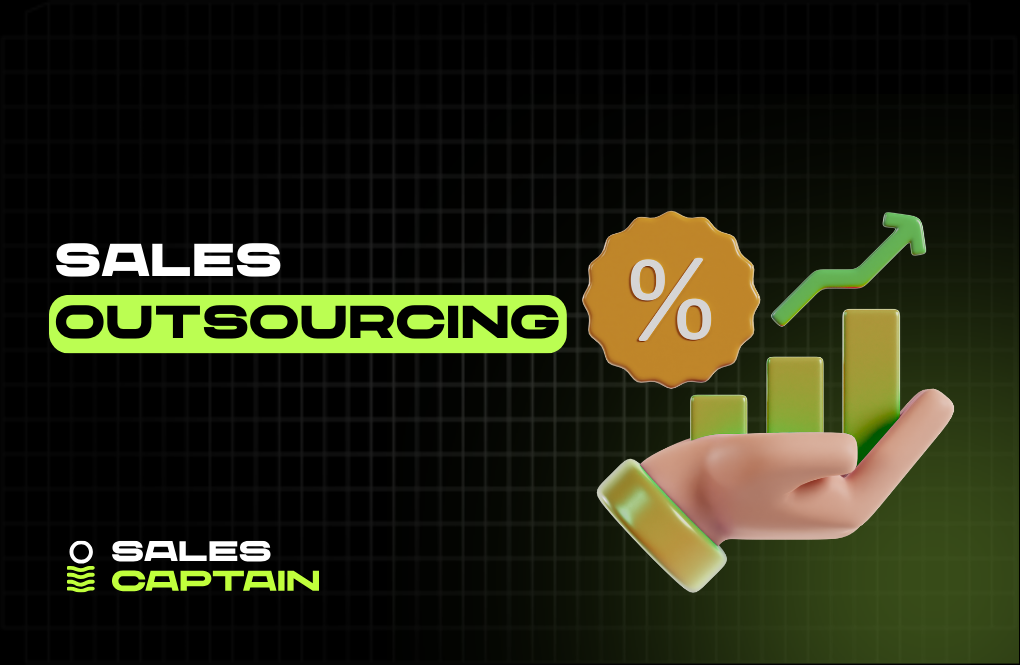
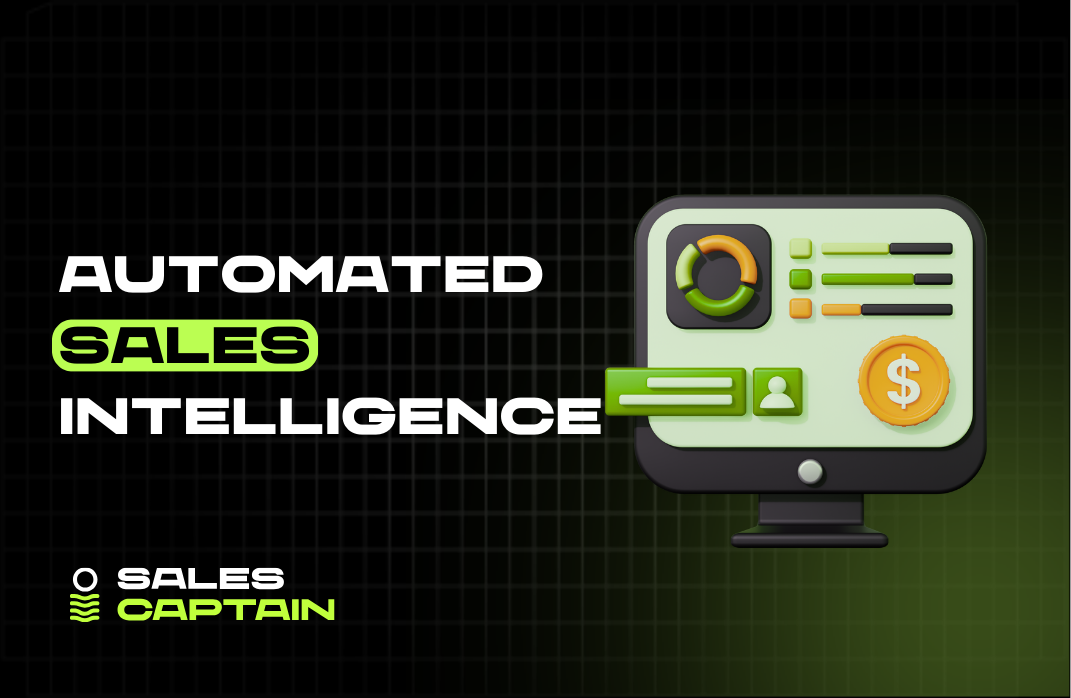
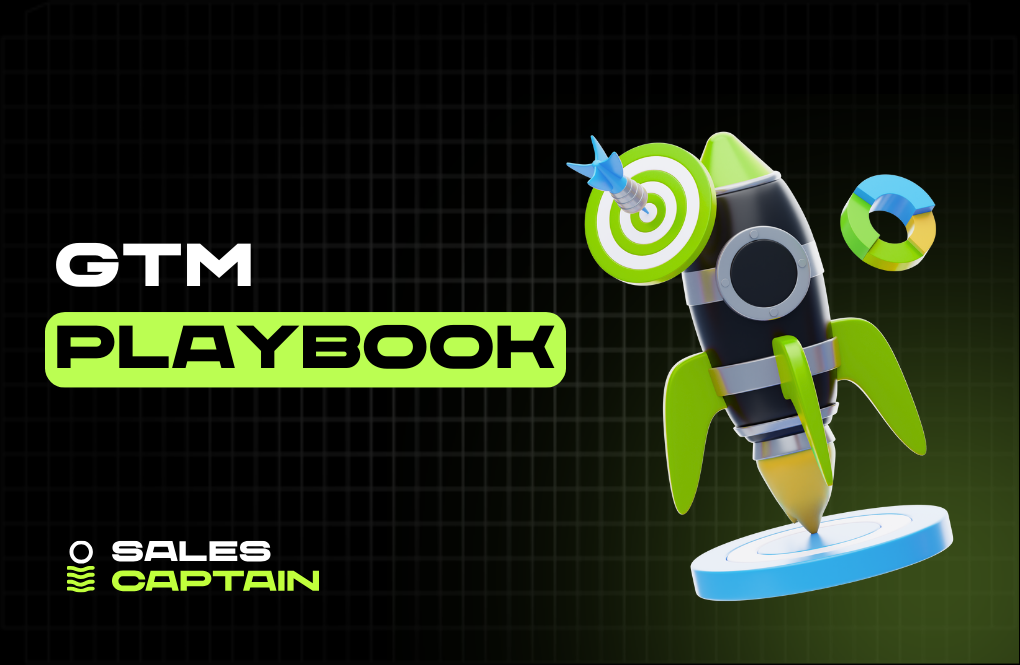

.jpg)
